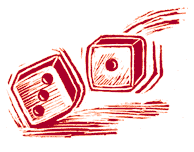Afterword
Buscando América
Come closer to me,Push close my lovers and takethe best I possess,Yield closer and closer and give methe best you possess.–Walt Whitman, from the poem A Song for Occupations, 1855
This is a love letter to six cities and to the 1,300-mile road trip that made me re-imagine their place in my memory.
Austin, Texas: For the downtown cellar-bar called the Cloakroom. Its low ceiling and shadows can make me forget the country and bluegrass twang of other bars. There is no stage for singer-songwriters at the Cloakroom. Stepping into this noir hole with friends on a recent night our banter became snappier, our steps more swaggering and our drinks more sophisticated–Scotch rocks and double shots of Tequila Añejo replaced the habitual bottles of Lone Star. Somebody picked up a deck of cards from the bar and we played poker, substituting matchsticks for chips. Jokes about doing this in Vegas were floated once, maybe twice before looking across the table at each other’s faces for one long, quiet moment, all of us thinking, Why not? Being writers, all of us, we rush to apartments to pack and pull books from each other’s shelves. By 1 a.m. we were four men in a forest-green Saturn moving west on the 290 highway, bound for the interstate.
Juárez, Mexico/El Paso, Texas: I love these two cities as I know them, from the distance of the highway. As to their character and their people I am ignorant. I have never spent a night under one of their roofs nor eaten a meal on one of their tables. But of the strange beauty I see from the passing window of the Saturn I am sure. The sun is rising to show us the Mexican hills of Juarez so near they seem like a suburban extension of El Paso’s gray, industrial rooftops. I see no greenbelts. Though I know El Paso has the hospitals, universities, and militarized border crossing of any first-world outpost, from the highway I forget these things. Half-asleep, one of the guys tells us the author Cormac McCarthy (All the Pretty Horses, Blood Meridian) lives in El Paso and considers it one of the last great American cities. My head rests against the dusty window and under the mellow dawn glare the two cities bind seamlessly. The odd American flag flapping above a factory or truck yard seems a weak protest to this already consummated marriage.

Anaheim, California: I arrived here in 1980 when it was still an anemic suburb of Los Angeles. I was six. The morning we left Peru my mother had knelt in front of me on the tarmac of the country’s one international airport to explain that we were going to live near Mickey Mouse. I agreed. She turned out to be an honest woman since I found that in Anaheim, on summer nights, I could climb the steps to the second story of our apartment duplex and see Disneyland’s fireworks. By the mid-eighties our neighborhood had absorbed an influx of Central American refugees, survivors of U.S. interventions. These folks joined the existing immigrants in a recession-plagued search for work. Our Anglo neighbors, in turn, pulled up stakes and moved toward the Los Angeles valley and interior desert towns. The neighborhood was a chameleon. By day our sidewalk play was presided over by the tuned and vigilant ears of the aunties and parents who seemed always near by. Impromptu cook-outs became block parties and we felt safe. By night empty garages were filled with unemployed men raging and drinking and blowing mariachi riffs out of dented trumpets. Stucco walls became graffiti canvases and I could hear teenaged boys disturbing the gravel of the alley outside my bedroom window as they escaped the police helicopter above. Disappointed, its searchlight only seemed to find me, alone and quiet in my bed.
Tijuana, Mexico: Tijuana is a city that refuses to lend itself to border boosterism. Whether welcoming American parents day-tripping for bargains or American college kids night-riding for booze, Tijuana will always give you what you want but it will never smile and say “Have a nice day.” Tijuana will let you come in, carouse on Avenida Revolución, drink and piss and vomit on Avenida Revolución if you want. But on your way home, as you hang outside the taxi window trying to sober up on the car exhaust of the border checkpoint, the last thing you’ll see before the wide open freeways of the States is the face of a little girl, standing between the columns of idling cars, snot pooling on her upper lip, shaking a maraca, singing “La Bamba” and hoping you’ll throw her a quarter. She is five years old and it’s past 3 a.m. Tijuana makes sure that the price you pay for telling the folks back home about the fun you had is either a willful forgetting of misery or the complacent acceptance of misery. I tried forgetting. It still hasn’t worked.

Las Vegas, Nevada: We are 20 highway hours and 1,300 miles west of Austin. Road weary, the boys and I are fading but still chasing losses at the El Cortez craps table in downtown Vegas. A big man takes the place next to me, six foot six, filling out his sweat pants and stretching the strap of his fanny pack. The chips he makes dance back and forth across his knuckles are not enough to steady his nerves and so in the few minutes we share above the rolling dice he pops a piece of Nicorette gum for every bet he places. I can see his jaws flex up to his temples with every chew. Craps is an amazingly communal game in that the players bet only against the house and ride the random luck of the dice. My neighbor feels free to share some tips about the more baroque turns of the betting and I begin to realize that for him this is no vacation. He’s a local and this is his life and this is his city.
I look around the El Cortez. Everywhere in Vegas it’s the same: mirrored ceilings, carpeting in vicious patterns, no clocks, and no windows. Design is conscripted here into the service of gambling. Every architectural line is drawn to keep your eyes cast toward the blinking lights, dealing hands, and rolling dice. The 2000 census reports that whites fleeing the poverty and immigrants of larger towns, folks just like those early neighbors in Anaheim, helped make Las Vegas one of the fastest growing cities in the nation. These new families helped spur the recent marketing of Las Vegas as a child-friendly, multi-themed resort city. Though roller-coasters and clowns may be the new face of Vegas, its clear that, at the El Cortez, no amount of marketing can distract from what is the heart of this city, the dynamo at the center of its economy, the one thing everyone here is doing together: hoping and losing and hoping again. To Austin for its willingness to surprise itself, to El Paso and Juarez for letting me imagine them woven whole, to Anaheim for raising me, to Tijuana for remaining vicious and to Las Vegas for letting losers hope.
What would Walt Whitman say if he traveled today’s American highways? He is often caricatured as a relentless optimist, constantly praising the collective potential in his still-young America. But I think he wrote from an aching awareness of the pains and shortcomings of his country. In asking for a trade in the best that we possess, he acknowledges the worst that we possess. Cities, certainly these cities that are dear to me, bring us, as Whitman asked, close. The question is, what do we give each other?
Farid Matuk is a poet and freelance writer living in Austin.


